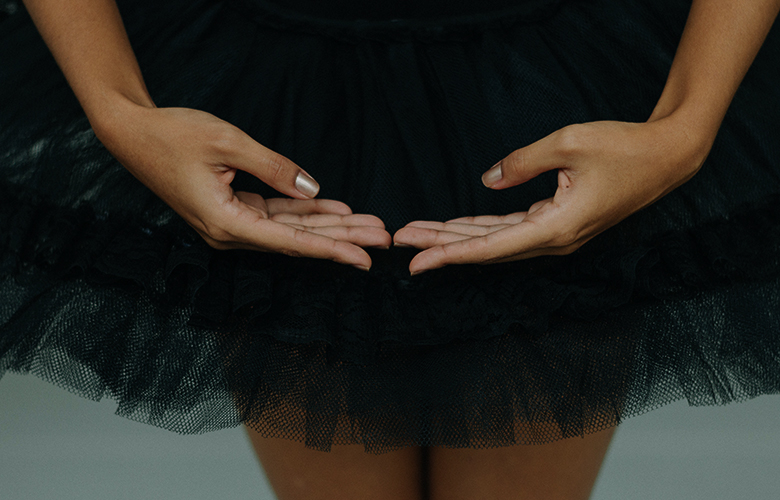
Perfectionism does not truly exist. It’s utterly unfathomable and unattainable, yet is still so coveted within the dance scene. Our minds allow us to see perfectionism within other dancers, yet never truly in ourselves.
To be ‘perfect’ means executing a sequence or routine in a technically flawless way. This means soft landings from jumps, clean shapes and long lines, and sharp turns with beautiful suspensions.
To say that perfectionism doesn’t matter, or that it doesn’t affect me, is absolutely untrue. I can easily watch another dancer and label them ‘perfect’- labelling myself as inferior in the very same breath.
I want to be technically ‘correct’. I want to have clean shapes and beautifully pointed feet. I do not want perfectionism to define my dancing to the point that one mistake in a performance ruins my entire day.
Dance is such a discipline-heavy art form, surviving on visuals and aesthetics, basing itself often upon human condition. But human nature isn’t perfect – our bodies are designed to be flawed. So why is art an excuse to aspire towards a non-existent notion?
We are forced to dance in front of a mirror every day, fixating on our ‘flaws’, examining and critiquing our bodies, and tirelessly striving to be the best. There is constant competition. Ballet exams when we are kids, competing in dance competitions as teenagers, auditioning for jobs as professionals. This is a highly competitive industry and this encourages perfectionism.
My infatuation with perfection began in a positive manner. It disciplined and focused my mindset – I was proud of the commitment that I possessed. Dedicating hours upon hours into extra-practise and personal scrutinisation, I began to see change within myself. Strength, agility, flexibility were all improving exponentially, yet my mental wellbeing was declining.
Then I got injured and failed in all of my auditions.
I reached a point where I was so anxious about being perfect that it disrupted my entire life. It came on suddenly and I found myself up every night worrying about my performances. I was constantly in tears, embarrassed about how I was feeling, and felt like nothing I did was good enough. I hated going to work and doing my shows every night. I eventually sought help from a hypnotherapist, and this helped greatly with my anxiety.
Struggling for ‘perfect’ left behind wounds – it ate away at my happiness. When you strive towards ‘perfection’ you lose focus of your wellbeing, surviving exclusively on physical successes. If you don’t reach these outlined successes or goals, you lose everything. I certainly did.
During training, the emphasis was always on striving, being better, achieving more. The implication was that we should suffer for our art, and there was no time to be happy. Unless I was dancing in a prestigious company, musical, or dancing behind a major recording artist, I hadn’t “made it”, and that once I did, these things would make me happy. But as someone who has achieved some success in the dance industry, I can assure you this is not true.
Dance training doesn’t operate on happiness – when you reach a certain level, you need to rely on your own confidence to fulfil you. There is no one to constantly do this for you. I’ve watched the downfall of some of the most confident and talented dancers – utterly obsessed with their own insufficiency.
I never felt like there was ever an emphasis on being happy while I was training. Being a professional dancer was almost always spoken about in a negative way. My teachers would say things like, “if you don’t love it, don’t bother, because it’s just too hard.” I was always told that being a professional dancer would make me poor, lonely, and make it almost impossible to settle down and have a family. I always felt like I had two choices: be a dancer or be happy. I chose the former.
Full-time dance training broke me. All sources of enjoyment that I had previously found were sapped away and replaced with anxiety. I have since realised that this isn’t a reflection on dancing itself or even the industry – it came from within. It was my own mindset that was the culprit for my anxious spiral. I required constant achievement to solidify that I was ‘good-enough’. I needed to be shown that I was getting closer to perfection.
It is now clear to me that my perfectionism was an unhealthy mental state. Healthy striving is a normal and healthy attribute, while perfectionism is a mental health issue which, left unchecked, can lead to anxiety and depression.
To a certain extent, pursuing a career in dance has made me enjoy it less. I am grateful that I have achieved my dream of being a professional dancer, but the truth is, dance is my main source of income and this is sometimes stressful. If I have an audition, there is a part of me that just wants to enjoy the process, but there is another part of me that is aware that if I don’t get this job, I might not be able to pay rent at the end of the month. And if I suffer a long-term injury? I face the possibility of not being paid.
I miss the days of dancing because it’s just ‘fun’. The more I grow as a dancer, the more issues I face, the more I strive towards perfectionism. Desired achievements get increasingly difficult to attain, as I dare myself further towards being perfect. The issue is, the older you grow, the less support you receive. You face tougher challenges, yet are expected to stand more solidly on your feet.
I find myself sometimes wondering if it is all worth it, but then I think about the fact that I would miss this industry if I walked away from it. This is what keeps me going.
I am starting to find a balance between perfection and freedom. I turned 30 this year and am only recently beginning to let go of the outdated idea of perfectionism that is implanted in dancers from a very early age.
I have found myself becoming stronger. I am now enabling myself to make my own mind happy, losing the notion of relying on exterior sources to build me up. Growing older has allowed me to realise how unfathomable ‘perfection’ is – I am simply enough without it.
I am learning to slow down and appreciate dance as the wonderful artform it is, not a list of achievements to be checked off a to-do list. Still, there is always a sense of “the next thing”. It feels like I achieve one dream and am already thinking about what is next.
Now that I hold an awareness of the implications of ‘perfectionism’, I can take small steps to worry less about reaching ‘perfect’. I have now arrived at a point where my main focus surrounds happiness – replacing my infatuation with perfection for being content and fulfilled.
Until mental health is made a priority in the dance industry, the problem of perfectionism will only get worse. Young dancers no longer have just their peers to compete with, but now, thanks to social media, they can compare themselves to dancers all over the world on a daily basis.
It is important for teachers to stop training young dancers that being in pain equals being weak.
We have no idea when to stop because we are not taught to listen to our bodies. We are not taught the difference between “good pain” and “bad pain”. We only stop when our bodies force us to, and at this point it is too late.
Students should be urged towards fulfilling themselves and trained in self-belief. In an industry that relies so heavily on confidence and ceaseless determination, this needs to be prioritised.
Acceptance is at the forefront of this issue – once you accept that you are both flawed and successful, you will begin to feel ultimately accomplished.
If you put happiness at the forefront of your priorities, you will never truly fail.

Crystal Nicholls
Crystal Nicholls is a professional dancer from Barbados who currently lives in London, UK. A lover of the arts, culture, theatre, food and books, she enjoys exploring and writing about these topics. She is currently an ensemble dancer in Disney’s The Lion King.

Stay or Play? The Difference Between Setbacks and Shutdowns


Mia Lyndon is a UK based freelance writer, who has previously trained as a contemporary dancer. She is the creator and director of Audition Quest (auditionquest.co.uk), an online audition support enterprise. Mia has written and edited for numerous platforms, including online magazines and dance & theatre websites. She is also a guest blogger for a variety of dance and performing arts blogs. CONTACT: auditionquest@gmail.com
Read Full Profile© 2021 TheatreArtLife. All rights reserved.

Thank you so much for reading, but you have now reached your free article limit for this month.
Our contributors are currently writing more articles for you to enjoy.
To keep reading, all you have to do is become a subscriber and then you can read unlimited articles anytime.
Your investment will help us continue to ignite connections across the globe in live entertainment and build this community for industry professionals.